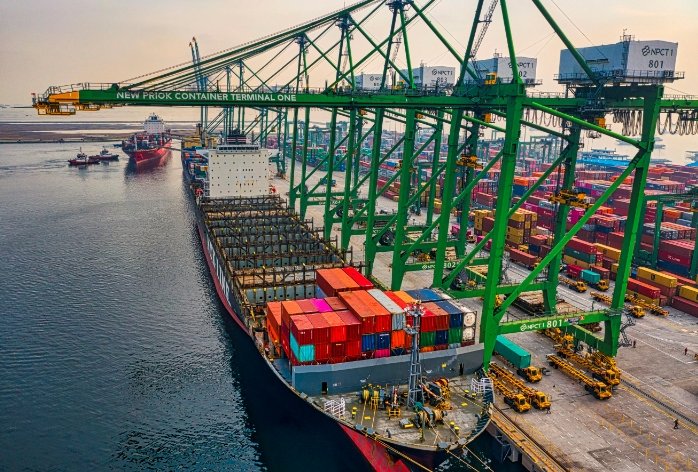The Greenock Ocean Terminal in Scotland has recently undergone a significant infrastructure upgrade, marking a major milestone in its modernization efforts. The project, which involved the removal and replacement of quayside crane rails, was completed on time and within budget. This upgrade is part of a broader initiative to introduce two new £25 million ship-to-shore cranes at the port, enhancing its capacity and efficiency. The project was managed by Deans Civil Engineering, a part of the RSK Group, in collaboration with Peel Ports.
Enhancing Operational Efficiency
The completion of the crane infrastructure upgrade at Greenock Ocean Terminal is expected to significantly enhance the port’s operational efficiency. The new crane rails will support the introduction of state-of-the-art ship-to-shore cranes, which are designed to handle larger vessels and increased cargo volumes. This upgrade is crucial for the port, which accounts for a third of all containers entering Scotland.
Deans Civil Engineering played a pivotal role in this project, managing a team of around 30 professionals, including project managers, engineers, and groundworkers. The team worked diligently to ensure that the project was completed without disrupting the port’s daily operations. This required meticulous planning and coordination, as the port needed to remain fully operational throughout the construction period.

The new cranes, set to arrive later this year, will further boost the port’s capabilities. These cranes are expected to improve turnaround times for vessels, reduce congestion, and enhance the overall efficiency of cargo handling operations. This upgrade is a testament to the port’s commitment to maintaining its competitive edge in the global shipping industry.
Future-Proofing the Port
The infrastructure upgrade at Greenock Ocean Terminal is part of a larger strategy to future-proof the port. Peel Ports, the operator of the terminal, has emphasized the importance of this project in meeting the growing demands of cargo owners and ensuring the port’s long-term viability. The £3.8 million investment in the crane infrastructure is the largest single investment in the terminal since it began operations in 1969.
James McSporran, director of Clydeport at Peel Ports Group, highlighted the significance of the new cranes in the port’s future plans. He noted that the cranes would be instrumental in accommodating increased cargo volumes and supporting economic growth in the Inverclyde area. The project also underscores Peel Ports’ commitment to sustainability, as the new cranes are designed to be more energy-efficient and environmentally friendly.
The successful completion of this project demonstrates the port’s ability to undertake complex infrastructure upgrades while maintaining high standards of safety and efficiency. It also positions Greenock Ocean Terminal as a key player in the UK’s maritime industry, capable of handling the demands of modern shipping.
Collaborative Efforts and Challenges
The crane infrastructure upgrade at Greenock Ocean Terminal was a collaborative effort involving multiple stakeholders. Deans Civil Engineering, as the principal contractor, coordinated with various subcontractors to deliver the project on time and within budget. This included Rapid Rail for the installation of new crane rails, Shearwater Marine for fitting storm anchors, and RJ Smith for earthing works.
Steven Deans, managing director of Deans Civil Engineering, expressed pride in the team’s ability to manage the project’s complexities. He emphasized the importance of thorough planning and execution to ensure that the construction works did not impede the port’s daily operations. The project required innovative solutions to address logistical challenges, such as maintaining uninterrupted access for vessels while completing the construction phases.
The successful delivery of this project highlights the expertise and dedication of the teams involved. It also sets a benchmark for future infrastructure projects at the port, demonstrating the value of collaboration and effective project management. The new crane infrastructure is expected to have a lasting impact on the port’s operations, supporting its growth and development for years to come.


















